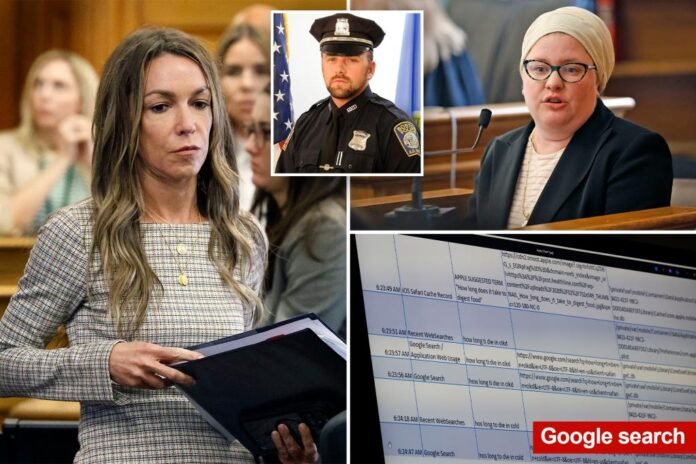The Karen Read Trial: Unraveling the Digital Evidence
The ongoing trial of Karen Read has captivated public attention, particularly due to the intricate details surrounding smartphone forensics. On Wednesday, a second expert witness, Jessica Hyde, provided crucial testimony regarding a Google search made by Jennifer McCabe, which has become a focal point in the case. This article delves into the implications of Hyde’s testimony, the defense’s arguments, and the broader context of the trial.
The Google Search Controversy
Hyde’s testimony clarified that McCabe conducted a Google search for the phrase “hos (sic) long to die in cold” at 6:24 a.m., after the remains of John O’Keefe were discovered. This timeline contradicts the defense’s assertion that the search occurred at 2:27 a.m., hours before O’Keefe was found dead in the snow outside his home on Fairview Road. Hyde emphasized that the earlier timestamp was merely when McCabe opened the browser tab, not when the search was executed.
This distinction is critical, as it challenges the defense’s narrative that McCabe’s search was premeditated or indicative of guilt. Hyde’s scientific certainty in her findings adds weight to the prosecution’s case, suggesting that the search was a reaction to the discovery of O’Keefe’s body rather than an indication of prior knowledge or intent.
Technical Complexity and Jury Engagement
Hyde’s testimony was laden with technical jargon, including terms like “hex editors,” “hash values,” and “database files.” While these details are essential for understanding how digital evidence is extracted and interpreted, they risk alienating jurors who may not have a background in technology. David Gelman, a defense attorney following the case, criticized the prosecution for presenting such complex information without ensuring it was accessible to the jury. He remarked that expert witnesses should simplify their explanations to engage jurors effectively.
The challenge of making technical testimony comprehensible is compounded by the trial’s atmosphere. Jurors may find themselves distracted or disengaged, particularly when faced with intricate details that seem to lack immediate relevance to the case at hand.
Cross-Examination and Methodology Scrutiny
Following Hyde’s direct examination, defense attorney Robert Alessi took the opportunity to cross-examine her. He questioned her about her previous testimony in Read’s first trial, which ended in a deadlocked jury. Alessi aimed to highlight inconsistencies and challenge the reliability of Hyde’s findings. Notably, he pointed out that O’Keefe’s phone was not secured according to established best practices after it was recovered, raising questions about the integrity of the evidence.
Hyde’s responses during cross-examination revealed the complexities of digital forensics. While she maintained the validity of her findings, the defense’s focus on methodology could sow doubt in the minds of jurors. The interplay between expert testimony and cross-examination underscores the high stakes of the trial, where every detail can influence perceptions of credibility.
The Broader Context of the Case
Karen Read faces serious charges, including murder, manslaughter, and fleeing the scene, stemming from the alleged incident where she struck O’Keefe with her vehicle after a night out drinking. The prosecution argues that she backed her Lexus SUV into O’Keefe, leading to his fatal injuries. In contrast, Read’s defense maintains that she did not strike him at all.
The trial has seen a range of testimonies, including that of Massachusetts State Trooper Connor Keefe, who discussed the collection of evidence, including phones and taillight fragments from the crime scene. His testimony helped establish a timeline of events, crucial for the prosecution’s case.
Conclusion
As the trial continues, the interplay of digital evidence, expert testimony, and cross-examination will remain pivotal. The complexities of smartphone forensics and the challenges of presenting such information in an engaging manner for jurors highlight the intricacies of modern legal proceedings. With both sides poised to present their arguments, the outcome of the Karen Read trial will hinge on how effectively they can communicate their narratives and the evidence that supports them. The next sessions promise to further unravel the details surrounding this tragic case, keeping the public and legal experts alike on edge.


